Imagine:
You’re waiting for a pullback towards support before you get long.
Somehow, the market knows what you’re trying to do and it doesn’t re-test the level you’re looking at.
Instead, the market continues to move higher without you—argh!
Sounds familiar?
Then you’re not alone.
The good news is, there’s a fix for it if you know what to look for in a pullback trade.
So read on…
#1: Trade in the direction of the trend
The first step to pullback trading is to identify a trend (that’s relevant to your timeframe), and then trade in the direction of it.
For example, if you’re trading the daily timeframe, then you must have a trend on the daily timeframe.
Here’s what I mean:
Or if you’re trading on the 1-hour timeframe, then you must have a trend on the hourly timeframe
An example:
Remember:
For pullback trading to work, the market must be trending (which means you can ignore range market condition).
#2: Classify the type of trend
Here’s the deal:
Not all trends are created equal.
Some have shallow pullbacks whereas some have deep pullbacks.
So here are the 3 types of trends every trader must know:
- Strong trend: The price respects the 20MA and remains above it
- Healthy trend: The price respects the 50MA and remains above it
- Weak trend: The price respects the 200MA and remains above it
You’re probably wondering:
“What’s the purpose of knowing the different types of trends?”
That’s because it helps you to identify the area of value on the charts, so you know where exactly to enter your pullback trade.
I’ll explain more in the next section, read on…
#3: Identify your area of value
In an uptrend, the area of value refers to the location on your chart where buying pressure could step in and push the price higher.
So let’s dive in…
In a strong uptrend, the area of value is at the 20MA.
Here’s an example…
In a healthy trend, the area of value can be at the 50MA (or at previous resistance turned support).
An example…
Finally, in a weak trend, the area of value is at the 200MA (or at support).
Here’s what I mean…
Pro Tip:
We’re dealing with an area on your chart, not a specific price level.
So, be prepared that the market could exceed your area of value before reversing higher.
#4: Entry trigger to time your pullback trade
An entry trigger is a “pattern” that gets you into a trade after all your conditions are met.
(In this case, our conditions are 1) trading in the direction of the trend 2) classifying the type of trend 3) identifying the area of value.)
There’s no need to complicate things here because an entry trigger could be as simple as buying on a pullback, or on a breakout.
I’ll explain…
Strong trend
As you know, a strong trending market has a shallow pullback and remains above the 20MA (for an uptrend).
This means buying on a pullback can be difficult because the pullback is usually short-lived before the trend resumes higher.
So, an easier approach is to buy a breakout of the swing high.
Here’s an example…
Healthy trend
In a healthy trend, the pullback is healthy and it could re-test the 50MA or previous resistance turned support—so these are areas to look for buying opportunities.
Next, you can look for a bullish reversal candlestick pattern (like Hammer, Bullish Engulfing Pattern, etc.) as an entry trigger to get long
Pro Tip:
You can also buy a breakout in a healthy trend, but your stop loss is wider as it needs to go below the 50MA or, the previous swing low. More on this later…
Weak trend
In a weak trend, the pullback is deep and it could re-test the 200MA or, support area.
Next, you can look for a bullish reversal candlestick pattern (like Hammer, Bullish Engulfing Pattern, etc.) as an entry trigger to get long.
Here’s an example…
Onward…
#5: Exits to protect your account and maximize your profits
Now, there are 2 types of exits to consider:
- Exit when you’re wrong
- Exit when you’re right
Let me explain…
Exit when you’re wrong
After you enter a trade, there’s a possibility the market could move against you.
So, at which point on the chart will you get out of the losing trade (otherwise known as your stop loss)?
Well, you want to exit the trade when your trading setup is invalidated.
For example:
In a strong trending market, the area of value is around the 20MA.
So, if the price breaks below the 20MA, then the area of value is breached and you should get out of the trade.
Here’s what I mean…
Here’s another one…
In a healthy trend, the area of value could be at previous resistance turned support.
This means if the price breaks below support, then the area of value is breached and it’s time to get out of the trade.
Here’s what I mean…
Next…
Exit when you’re right
Now what if the market moves in your favour, how will you exit your winner?
Here are a few general guidelines:
Strong trend: In this market condition, it’s ideal to ride the trend because the pullbacks are shallow which makes it easy to hold onto your winner.
You can trail your stop loss using the 20MA and exit the trade only when the price closes below it.
Healthy trend: In this market condition, you can capture a swing by exiting your trade before the swing high.
Or else, you can ride the trend using the 50MA, but bear in mind the pullbacks are deeper which requires you to withstand more “pain”.
Weak trend: In this market condition, you want to avoid riding a trend because the pullbacks are deeper and will likely stop you out of your trade.
Instead, look to capture a swing at resistance or the previous swing high.
If you want to learn more about swing trading and riding trends, then check these out…
Bonus #1: How to identify high probability pullback trades (for stocks)
When it comes to stock trading, it’s possible to have hundreds of stocks forming a pullback trading setup at the same time.
So the question is:
How do you know which stocks to buy and which to avoid?
Well, the secret is to focus on stocks which have increased the most in price over the last 12 months.
Why?
Because these are stocks likely to outperform the market (and it’s been proven in theory as well according to the paper Returns to Buying Winners and Selling Losers by Jegadeesh and Titman).
So, how do you apply this to your trading?
- Rank stocks according to their rate of change (ROC) over the last 50-weeks—from the highest to the lowest
- Look for a pullback trading setup on stocks with the highest ROC value. If there isn’t, then move to the next stock (with a lower ROC value)
- The top 5 stocks with a valid pullback trading setup are the ones to focus on
Pro Tip:
You can use a platform like Thinkorswim to help you rank the stocks, and it’s free.
Bonus #2: Multiple plans of attack
Most of the time, the market will not behave the way we want it to be.
For example:
You’re waiting for the price to test support before you look for an entry trigger to go long.
But somehow, the market knows what you’re trying to do. So, it doesn’t test support and continues to move higher, without you.
Sounds familiar?
That’s why as a professional trader, you must have multiple plans of attack.
So, even if the market doesn’t behave in the manner you’d like it to, you’ll still have other setups to capture opportunities in the market.
Here’s an example…
In the chart below, TATA has broken out of resistance. So, one possible setup is to wait for the price to re-test previous resistance that could act as support, around the 358 area.
However, the market knows what you’re thinking and the price doesn’t re-test support. Instead, it consolidates and forms a buildup.
If you’re a one-trick pony, then you’ll remain on the sidelines as the market breaks out higher.
But, if you have multiple plans of attack, then you could also look to buy the breakout of the buildup.
Here’s what I mean:
Make sense?
Conclusion
So here are the things to look for in pullback trading:
- Trade pullbacks in the direction of the trend (not against it)
- Classify the type of trend: strong, healthy, or weak
- Identify the area of value for the respective type of trend
- Look for a valid entry trigger to get you into a trade
- Know when to exit when you’re right or wrong
Now over to you…
What do you look for in a pullback trade?
Leave a comment below and share your thoughts with me.

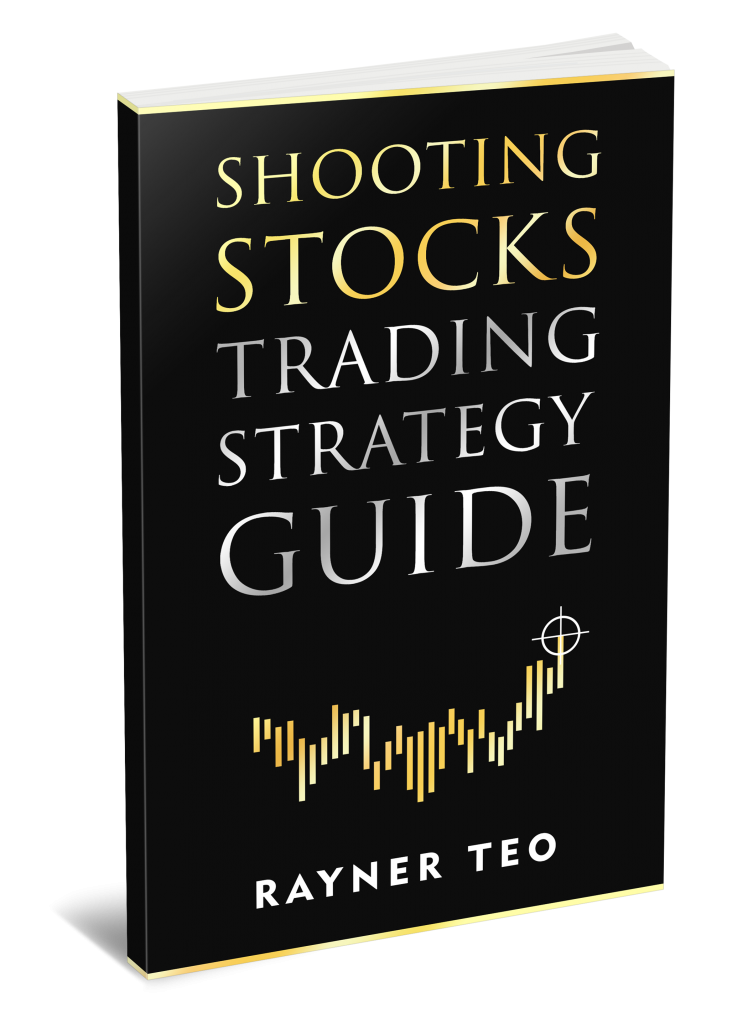
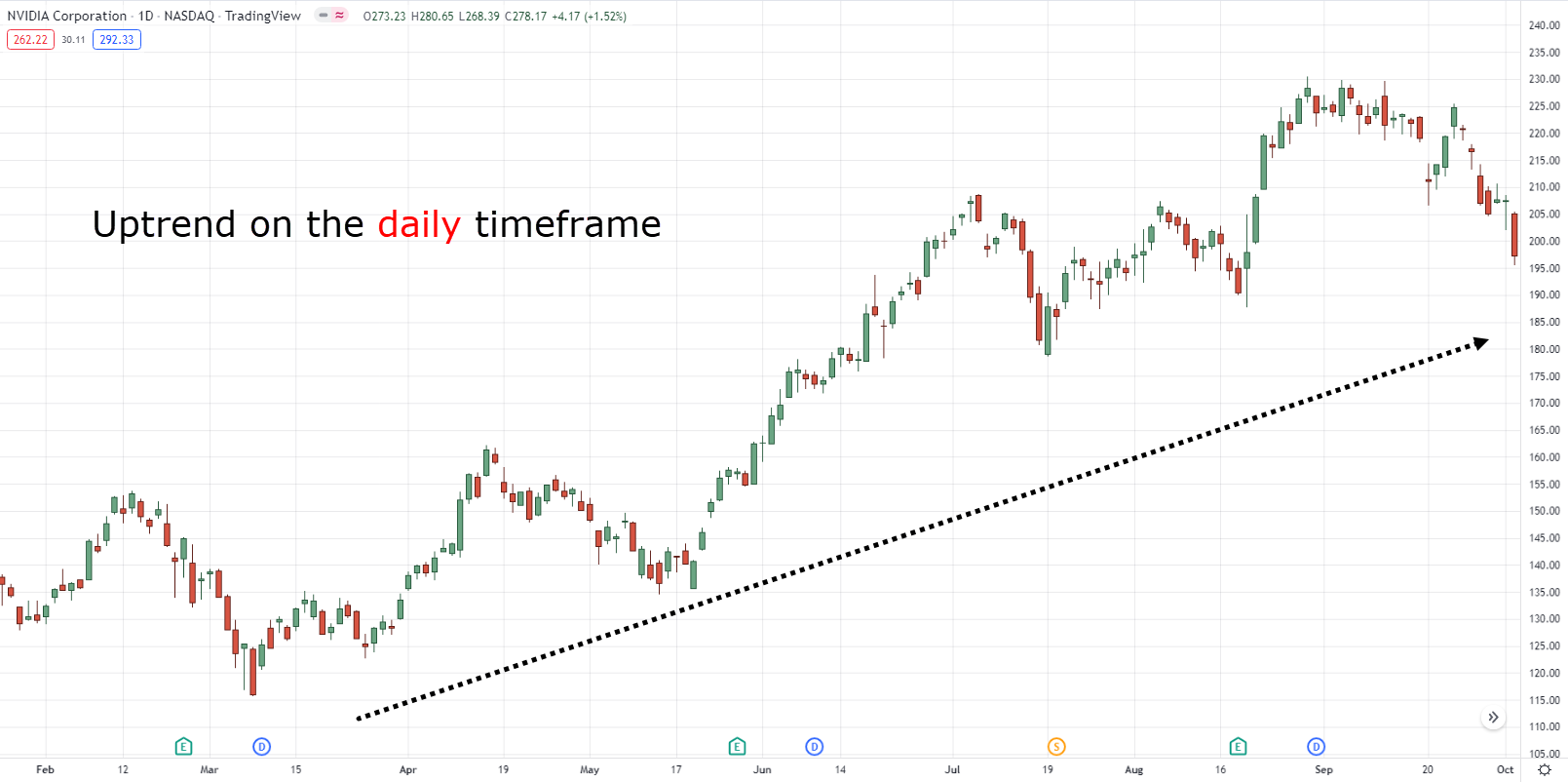
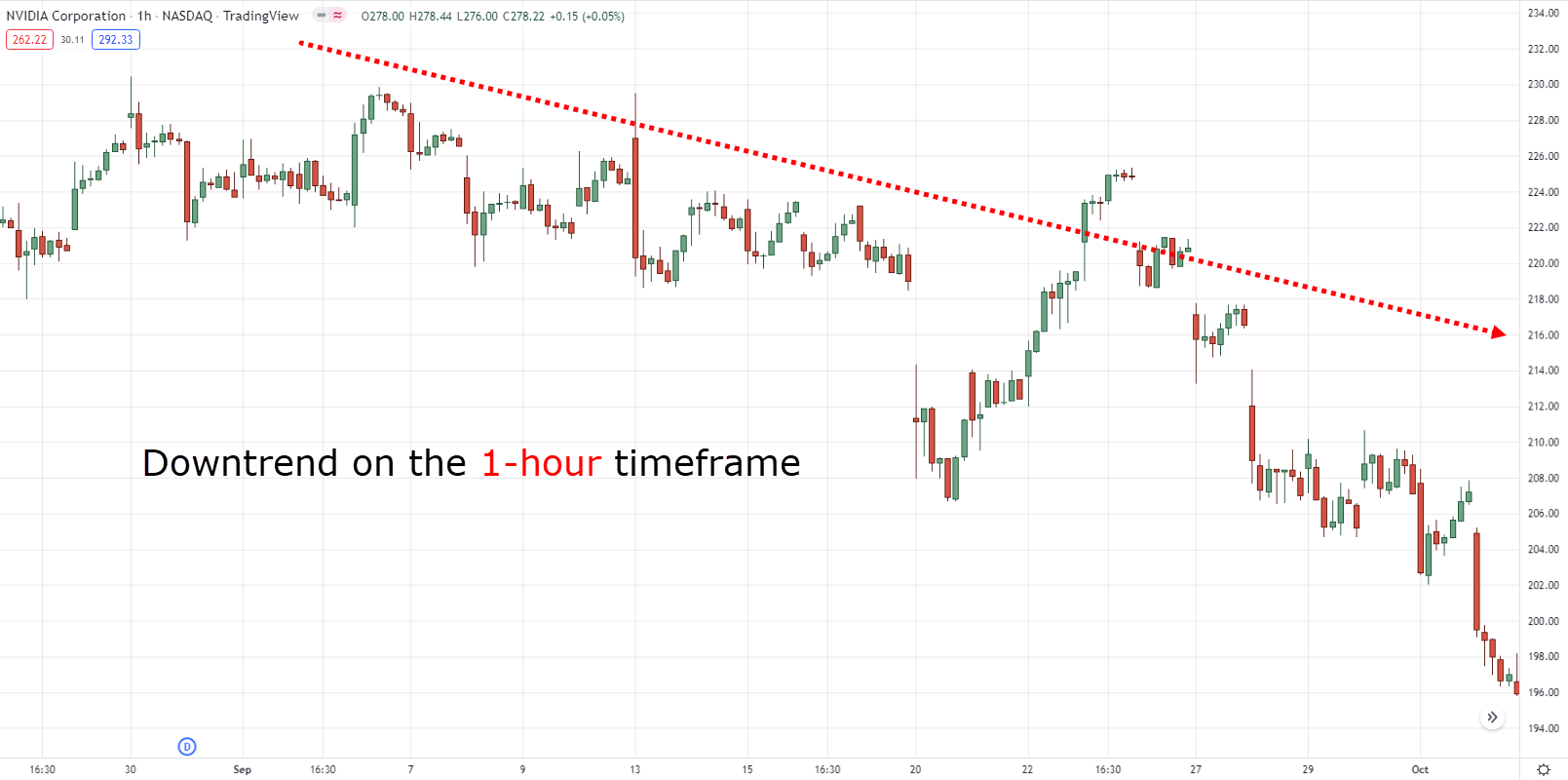
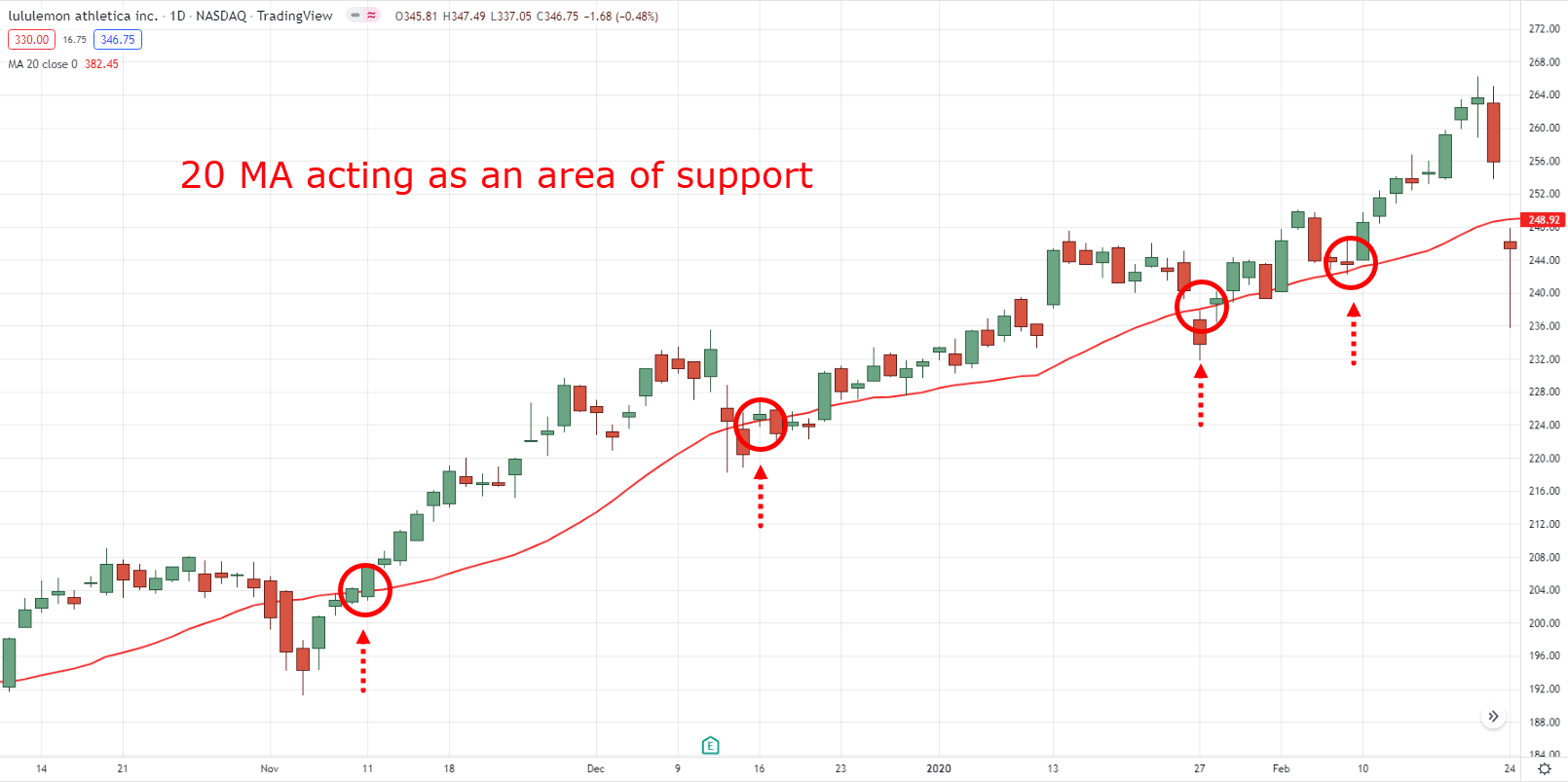
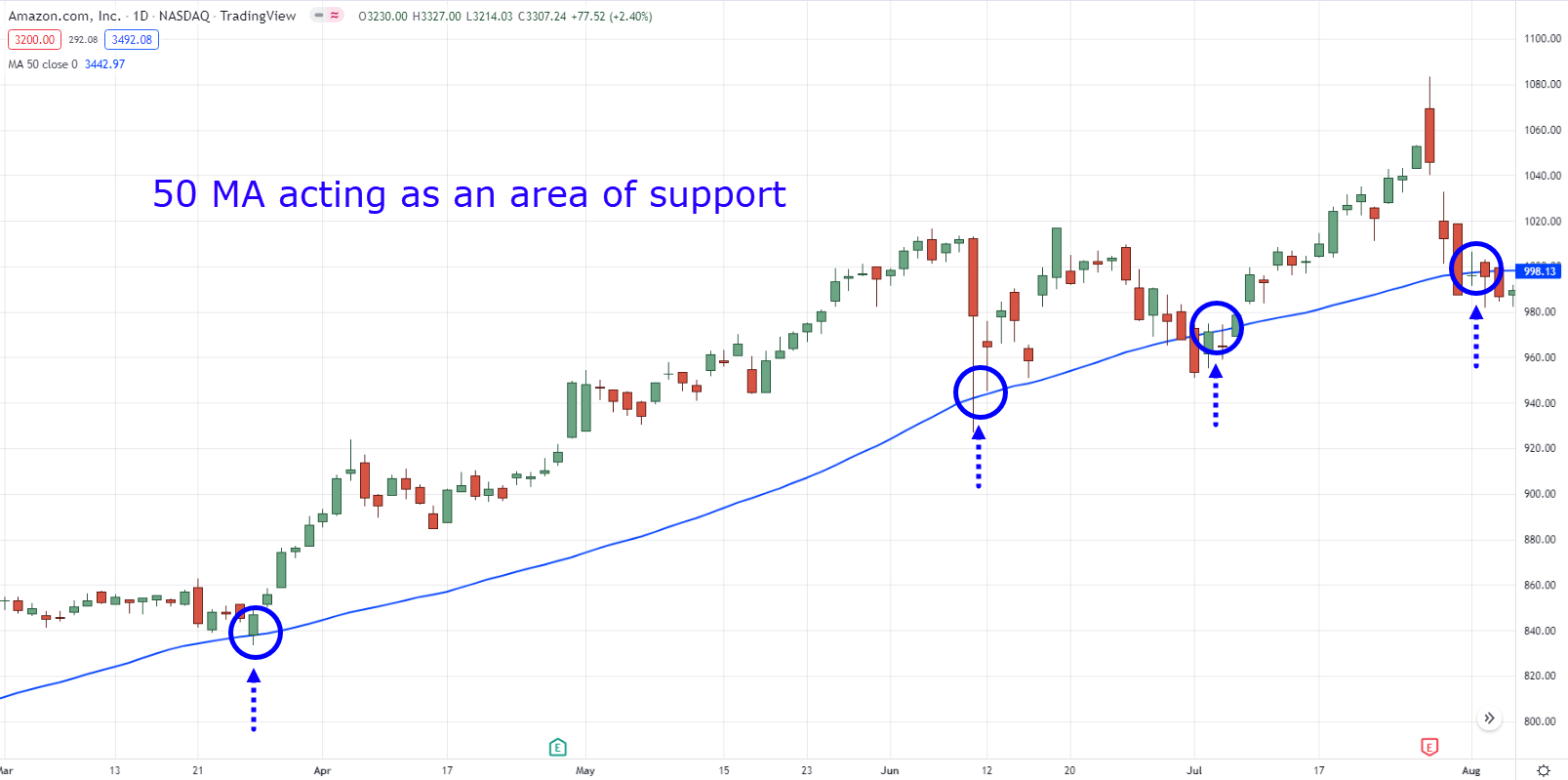
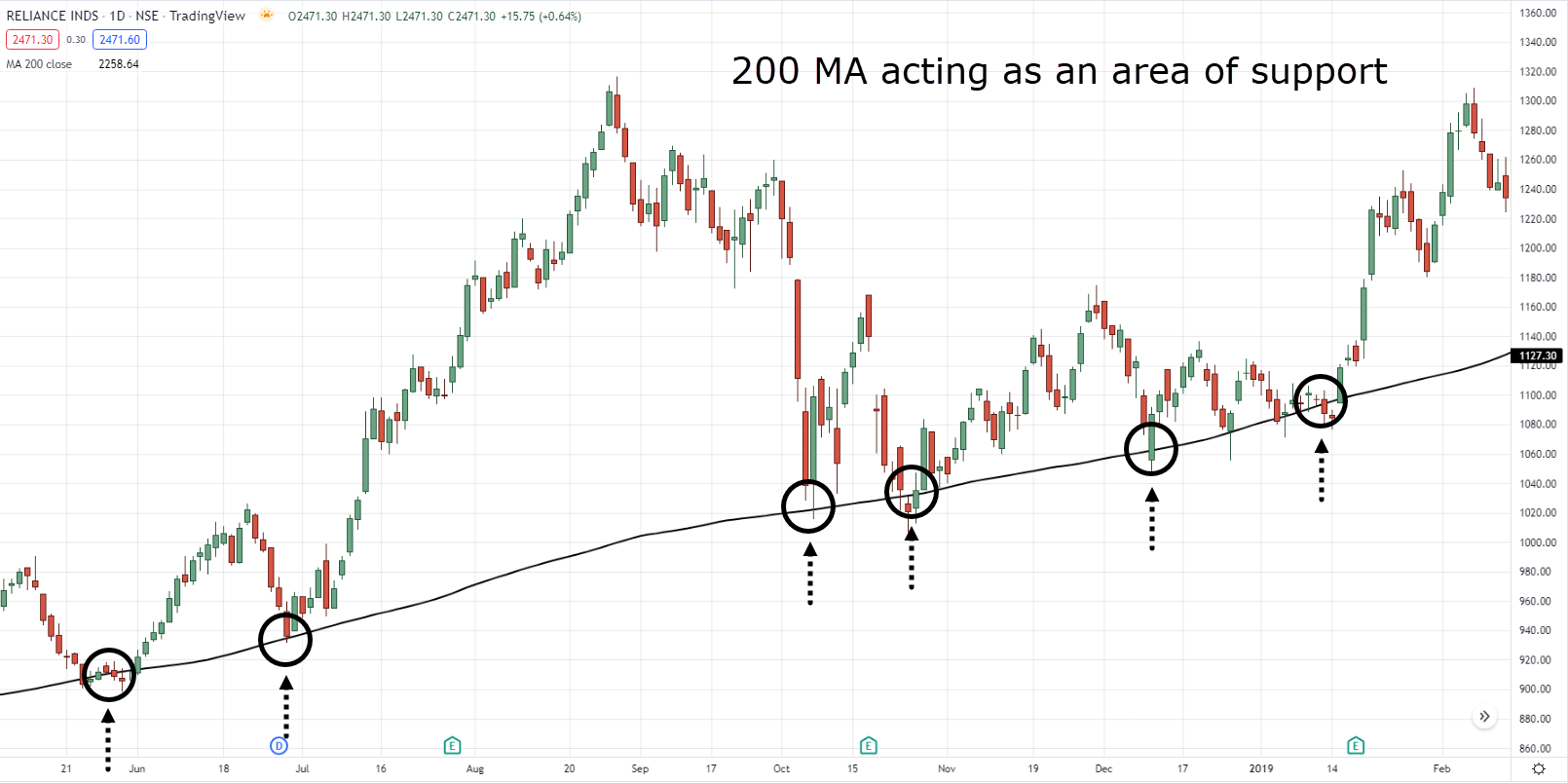
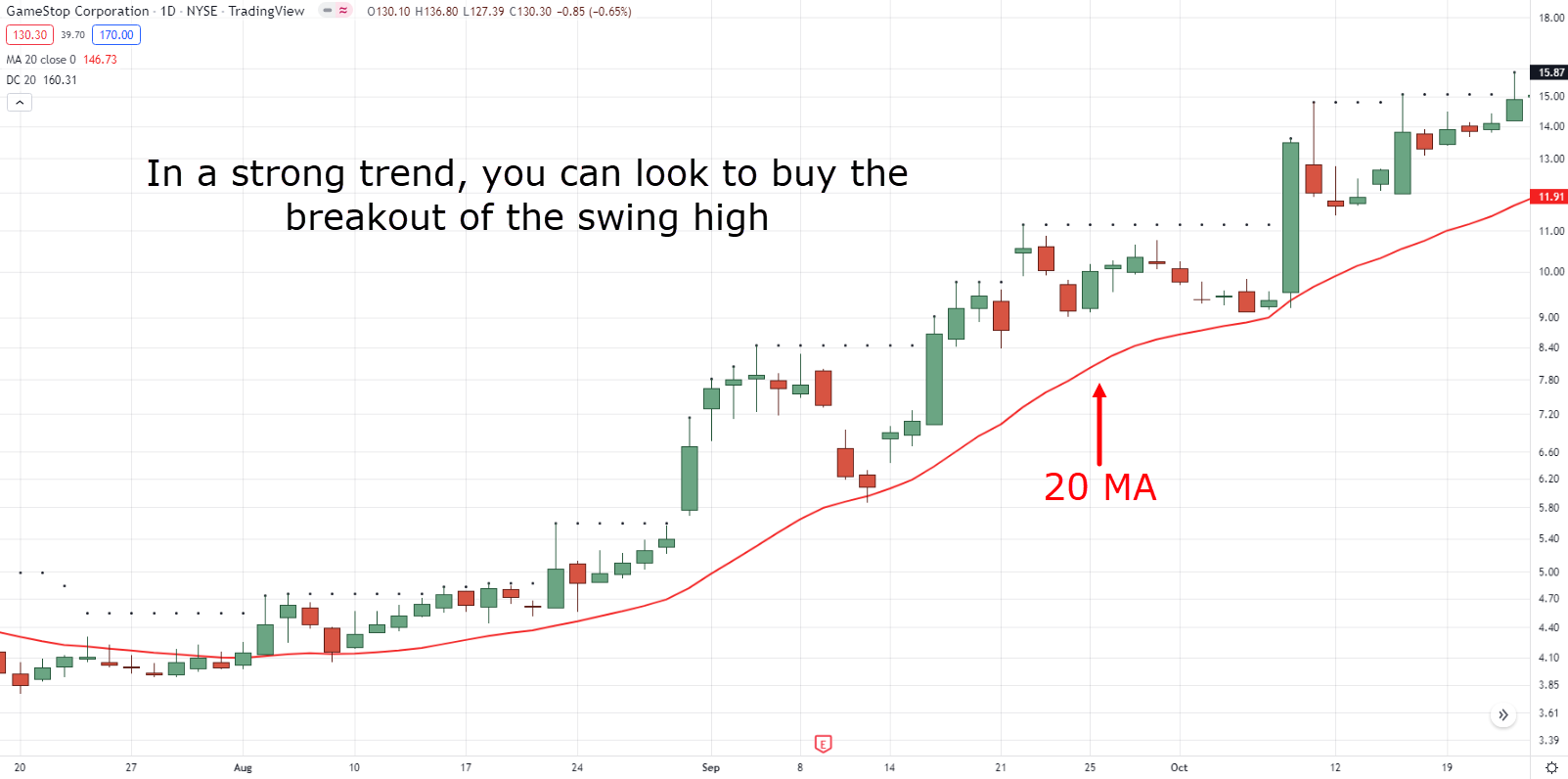
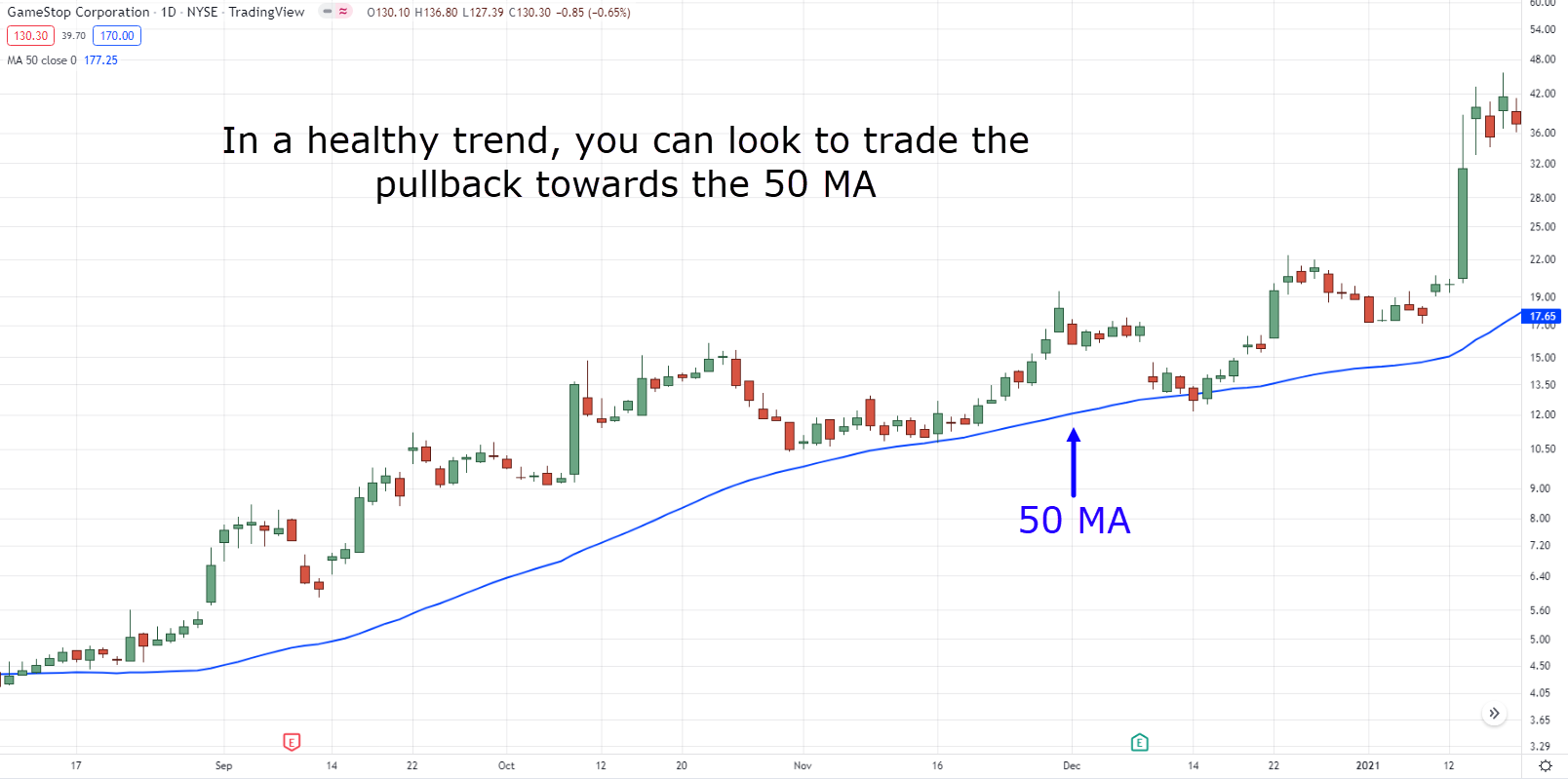
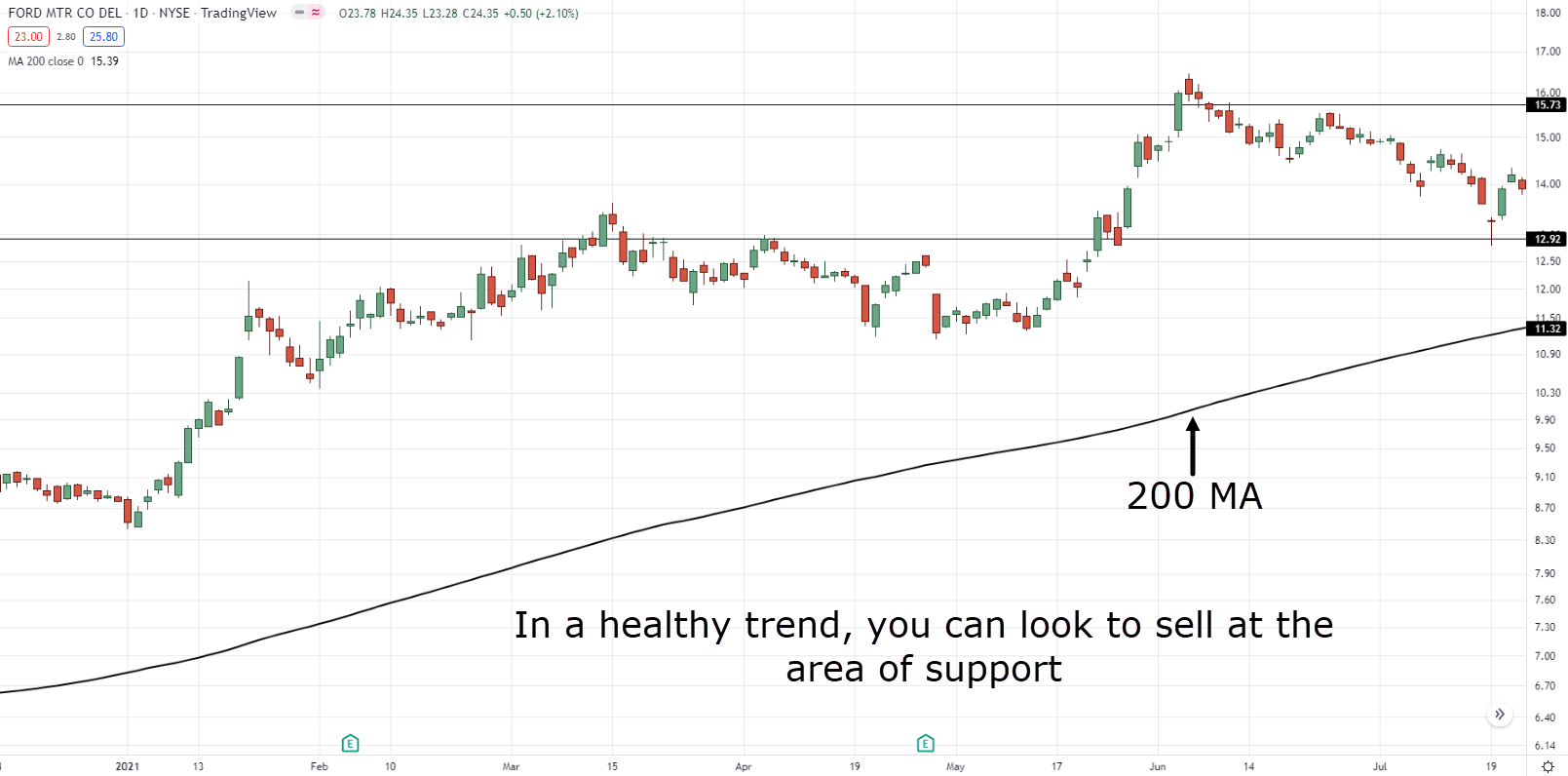
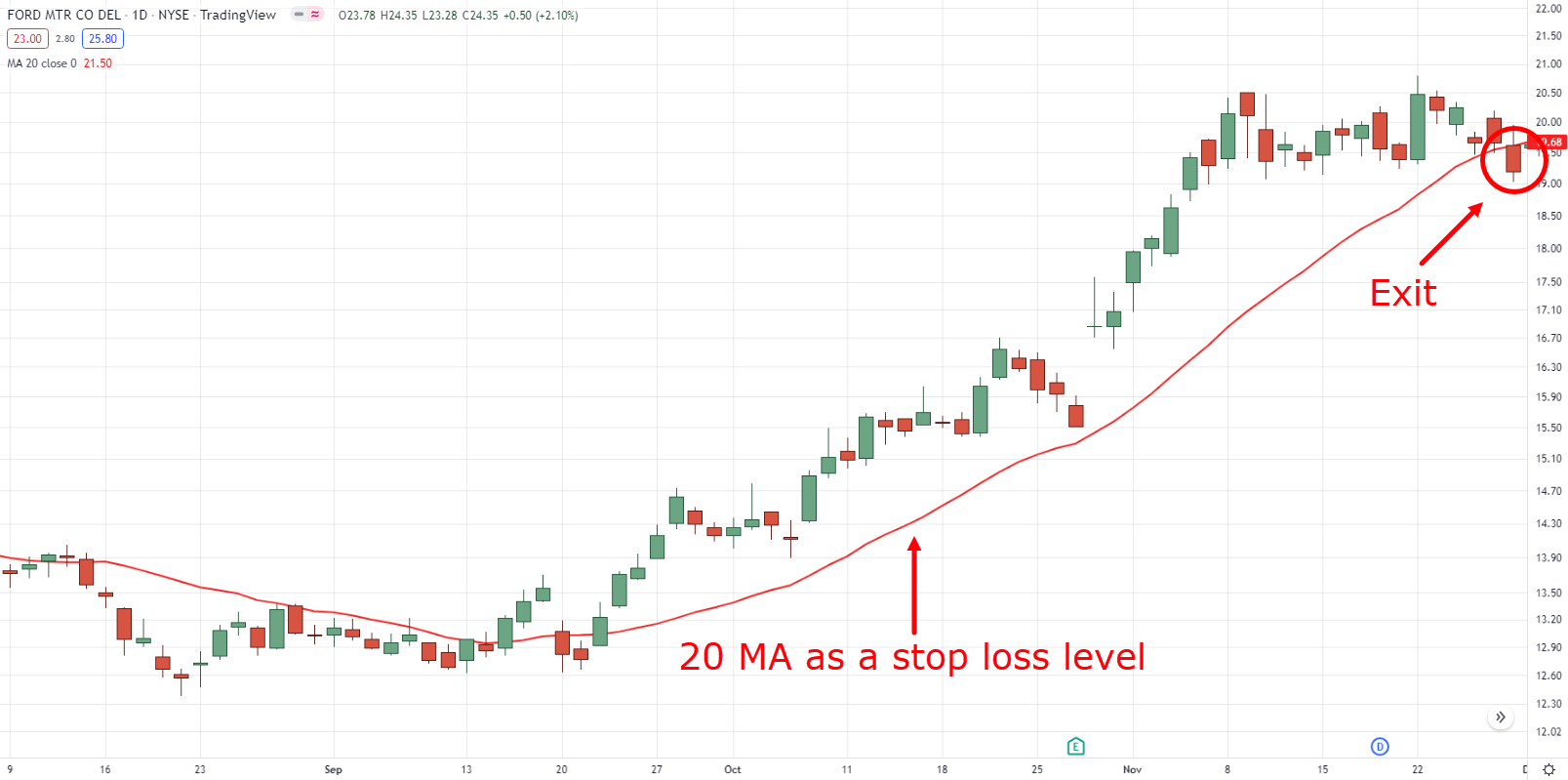
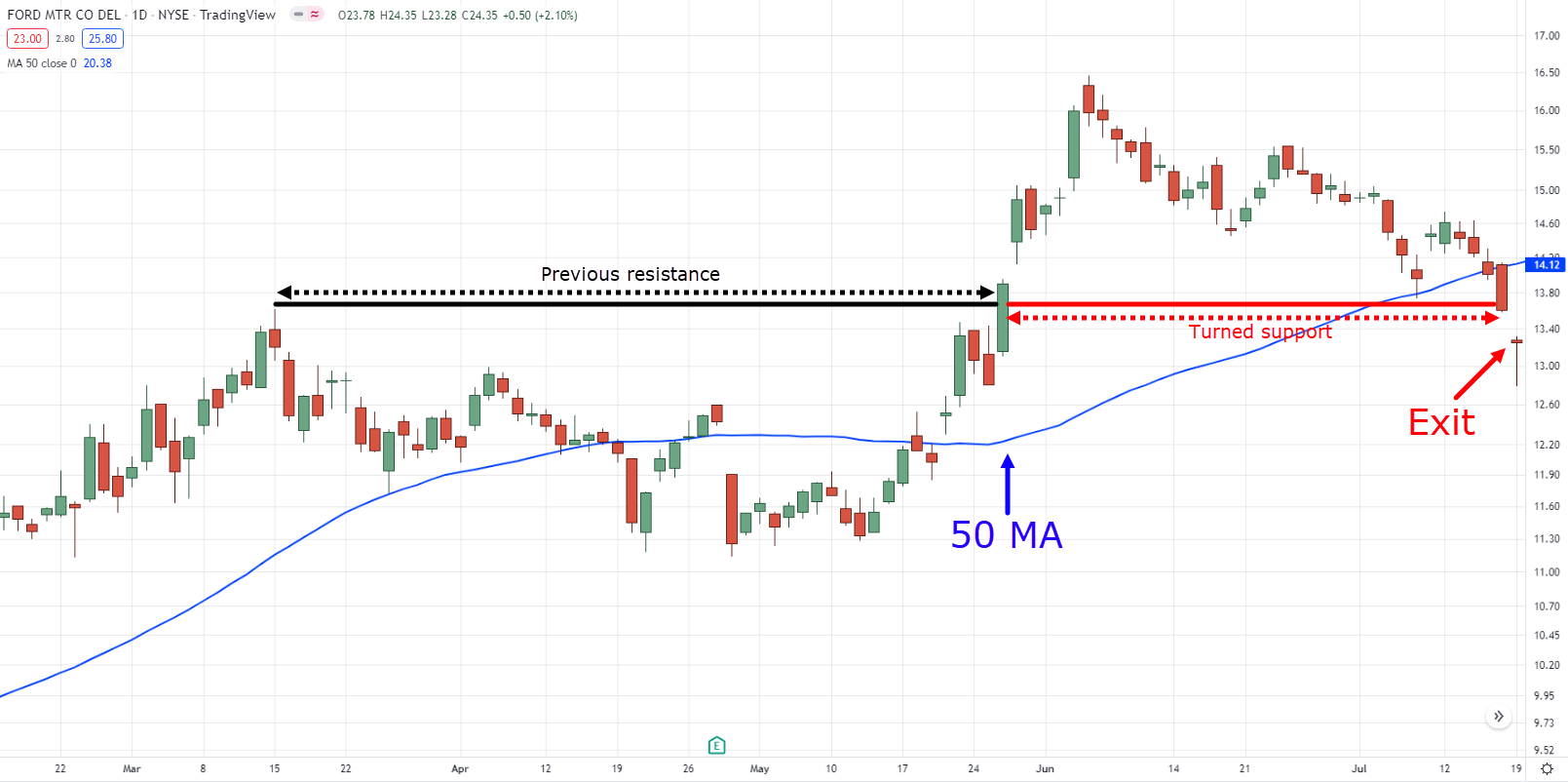
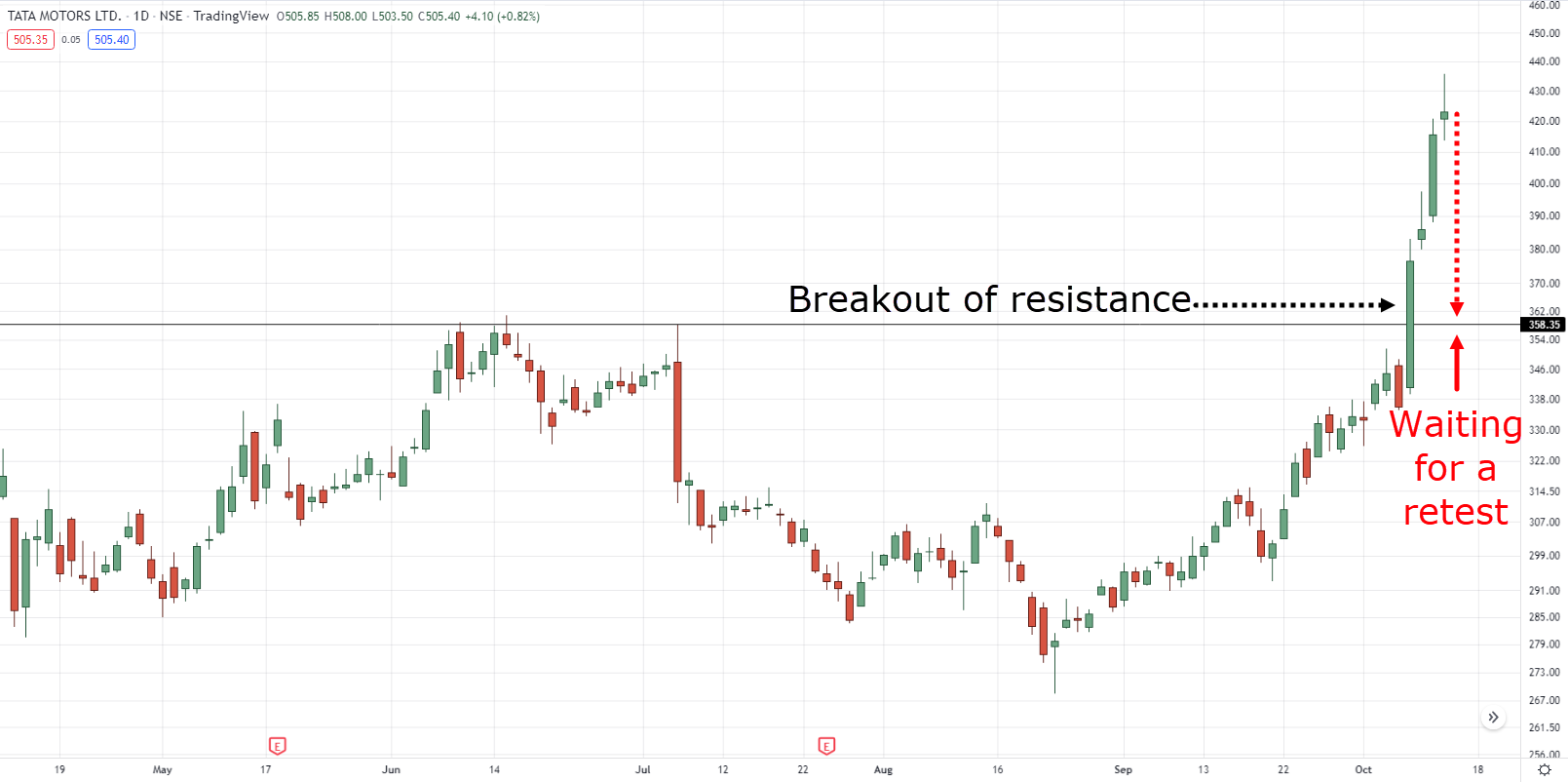
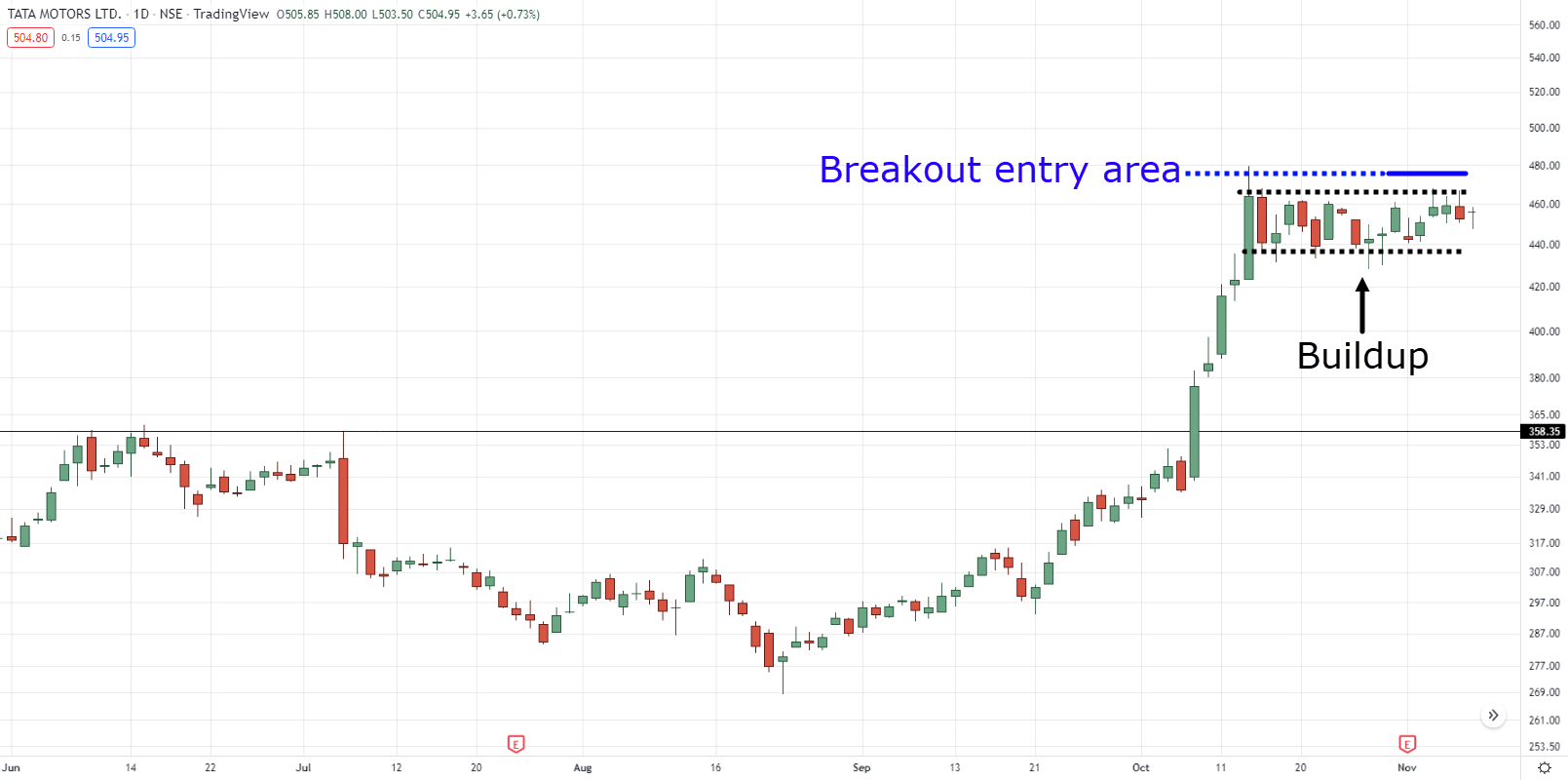
Super sir
Definitely, thanks Ramedh!
Teo you are a treasure
May Allah guide you to the best exit after a long and profitable trend
Thank you for the Kind words Djaafar!
Great comment!
Super sir
For sure!
Hey my friend
Since I follow you I see what I’m doing I understand a lot,
Thank you so much Rayner
You’re welcome Thanda!
Thank you God bless you.
You’re welcome Nkosingipile!
You are a blessing Teo,I av never regretted following you for once cos u av really opened my eyes to the real world of trading.May God continue to bless u.(senior man)
Awesome to hear that Oluwafemi!
So if market breaks support or resistance that means it likely to re- test?
Yes!
Or it might not retest but form a flag pattern
And we can look for a build up to trade the market if it does not retest after a breakout right?
That’s correct!
If it breaks out then forms a “build up” then it’s already called a flag pattern setup itself already!
Thank you sir for this amazing information.
You’re welcome, Rohit!
Trading made simple right there beloved friend! Insightful and precise, you’re a blessing when it comes to imparting trading knowledge Sir Rayner.
Awesome to hear that Siphumze, you’re welcome!
🔥🔥🔥 this is exactly the way I trade but I combined it with another indicator in my opinion it’s the best but I always trade with the trend thank you for sharing all of this it’s very useful and I’m grateful keep up the good work I told
my friends to follow you
Great to hear you and your friends are learning with us Aladino!
Thank u sir for your wonderful theory
You’re welcome, Pavan!
I have carried alot of confidence in trading pullbacks and I have known the systematic way of trading a pull back
Very happy to hear that, Moses!
Thank you Mr Ryner, this is absolutely amazing.
Awesome to hear that, Isaac!
I love ur contents Teo, I have not been so long in this trading journey,but ur books and articles have given me so much insight.
Thanks man
Awesome to hear that, you’re welcome!
Teo please I have a little question, can u use ATR in setting ur stops when u are trading “trend pullback”?
Of course!
The ATR can be used in any trading style and setups
Great piece. Thanks a lot for your help and education. You keep us in trade with your daily, weekly and timely educational materials. Much love mentor
You’re welcome Akuamoah, I’m glad to hear that!
Nice Work, Thanks Teo
You’re welcome, Attah!
Thanks for all your guidance sir
You’re welcome, Asiphe!
Thanks 😊 for the insight does this method works with forex trading as well?
Of course, they do!
I’m been enlighten by your shared knowledge everyday, God bless Rayner.
What is your recommendation for a starter in fx trading sir
With the years of your enormous experience?
Hey there Isaac, what type of recommendation do you need?
Hi sir,
Thanks for valuable content you are sharing free. I am getting lots of information through your blogs..keep doing great work. For retails investors who doesnt have large capital these blogs are crucial. Thanks
Love to hear more
Great to hear that, Anil, you’re welcome!
Great lesson thank you very much
You’re welcome, Gabriel!
I look at a possible refined zone and then place a trade
Thanks for sharing, Maimuna!
One of the few who puts out free advice. Thanks Teo for all that you share. Happy Holidays to you and your family.
You’re welcome, Evan!
Happy holidays as well!
Thank u Rayner, i’ve learned a lot from u
You’re welcome, Budi!
I am follow Rayner many month he is my inspiration your video is a such a helpful
So happy to hear that Vikrant!
Is this works on crypto too?
Definitely, Dmytro!
educative,I like it
Glad you’ve find it educative, Dominic!
Golden content! Thank you 🙏🏻
You’re welcome, Jeff!
Hello what silver will done next week for example?
Super
That’s right, Sai!
Area of value
Type of trend
Entry trigger
Exit points
Awesome, thanks for sharing, Franklin!
Thanks bro
You’re welcome, Franklin!!!
I look for an Eglufing candle
Thanks for sharing, Isaac!
I have a question, how can I profit in the bear market I understand the concept of buy low, sell high, buy high, sell higher, but how is it that in the bear market you buy high and sell lower please help.🙏🏽
We’ll have an upcoming article about this one, stay tuned!
Ok great, thanks.!!
You’re welcome!